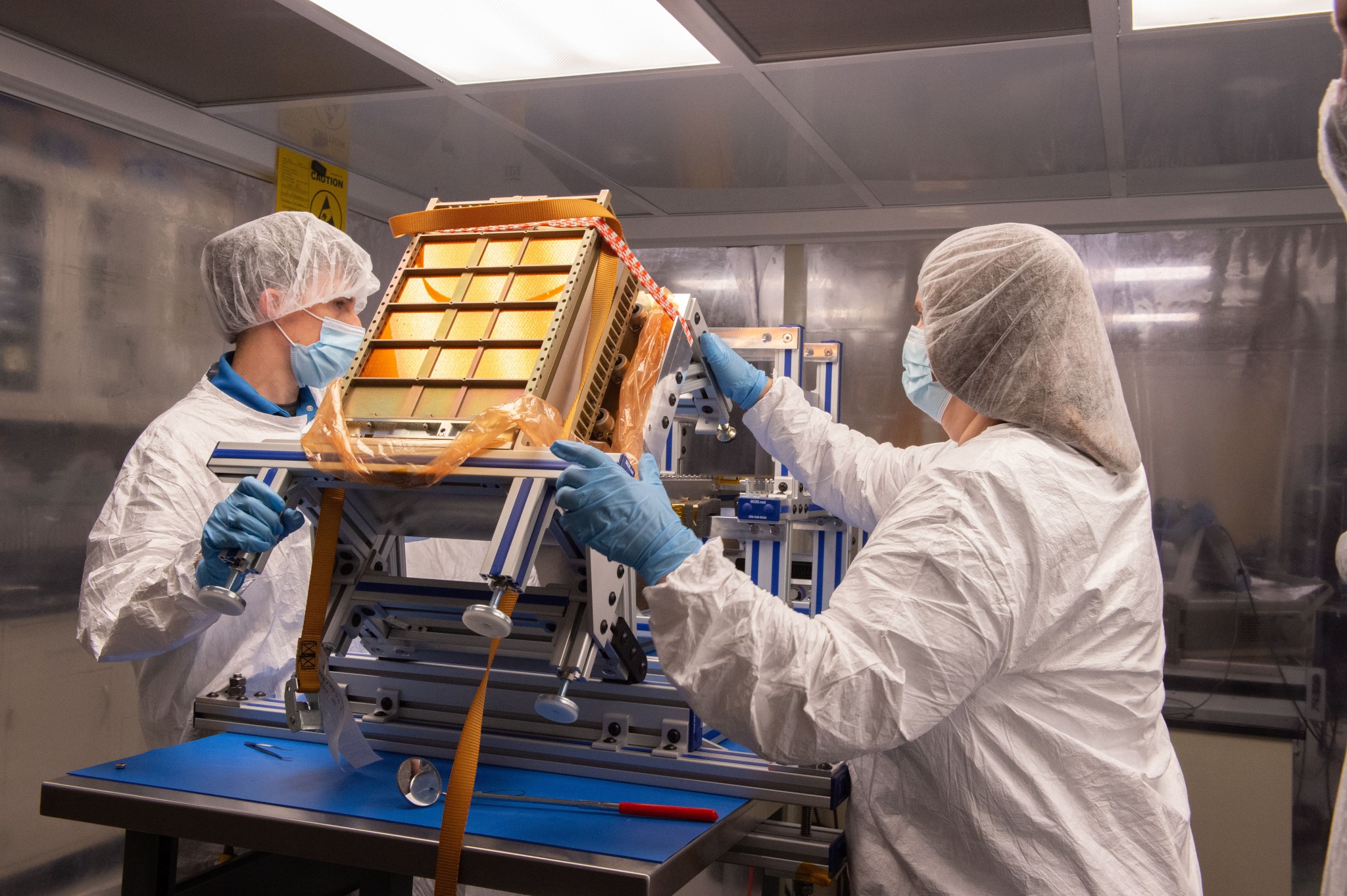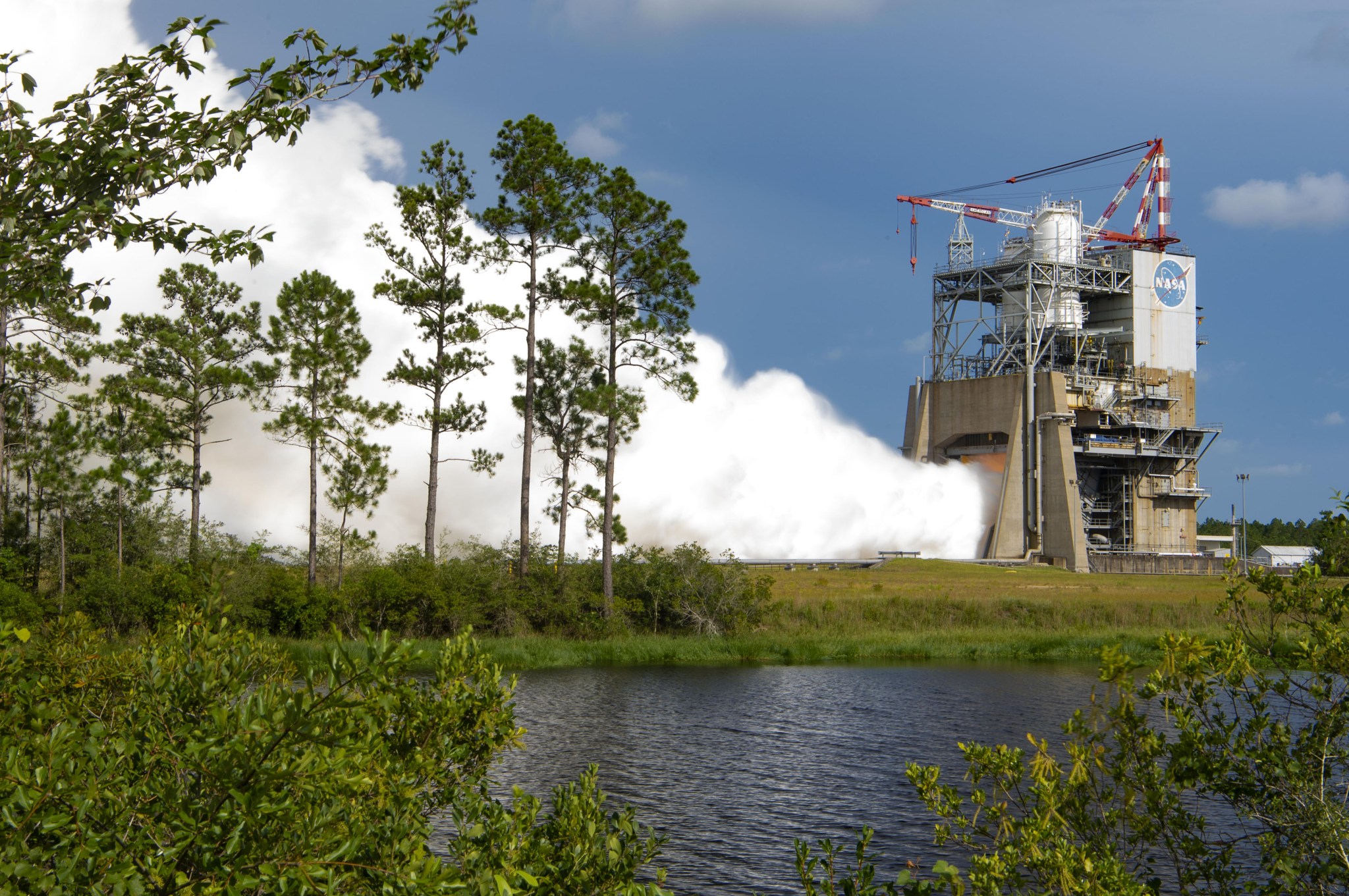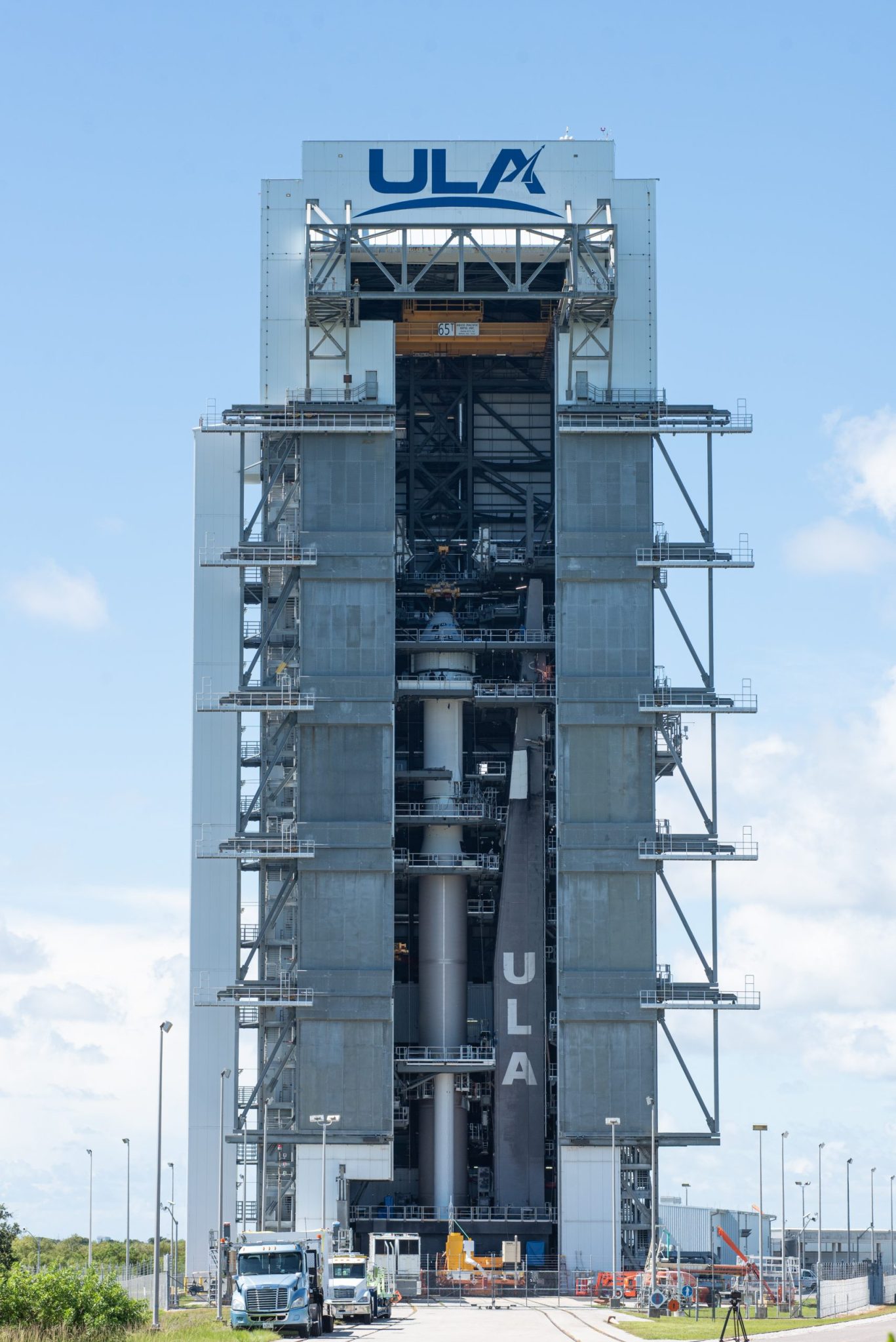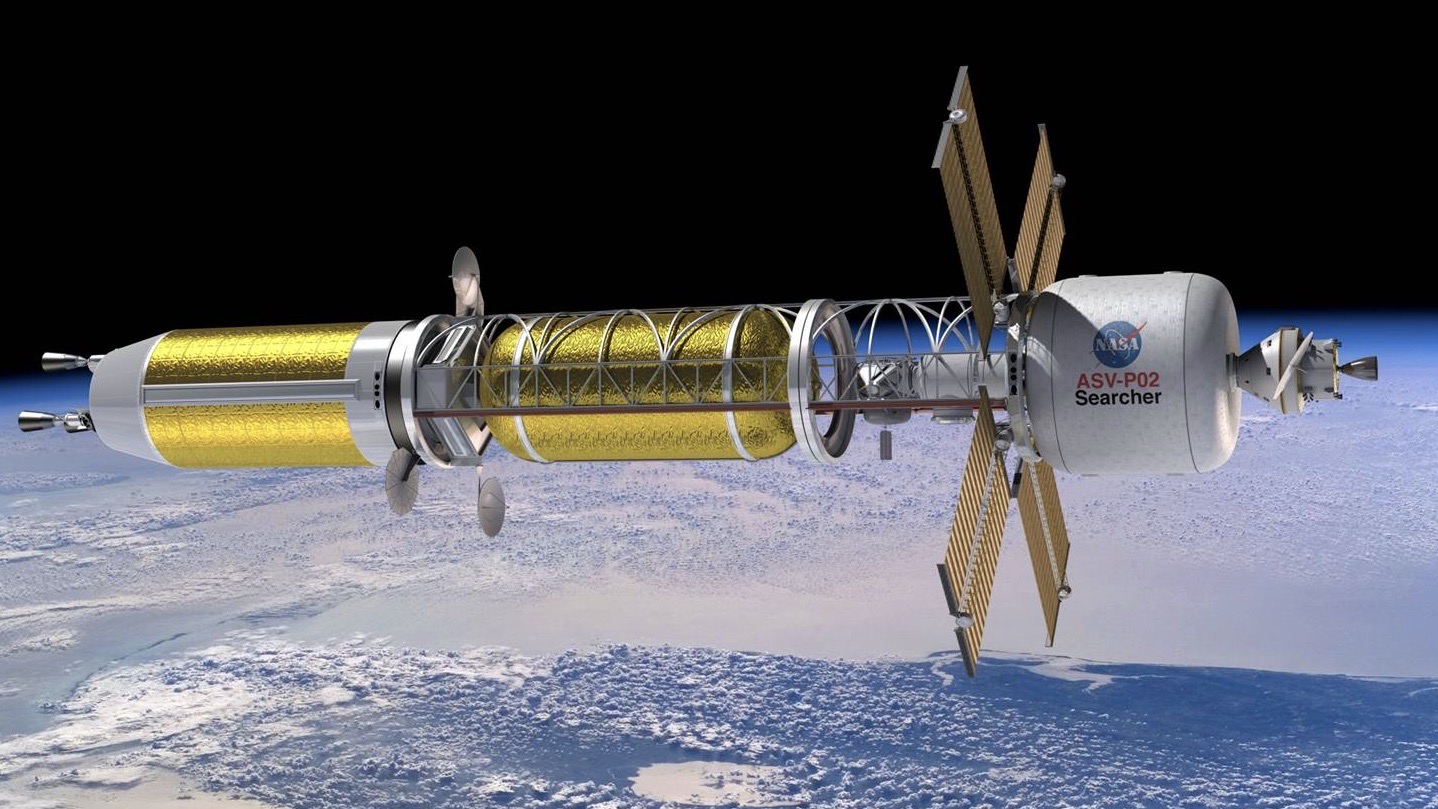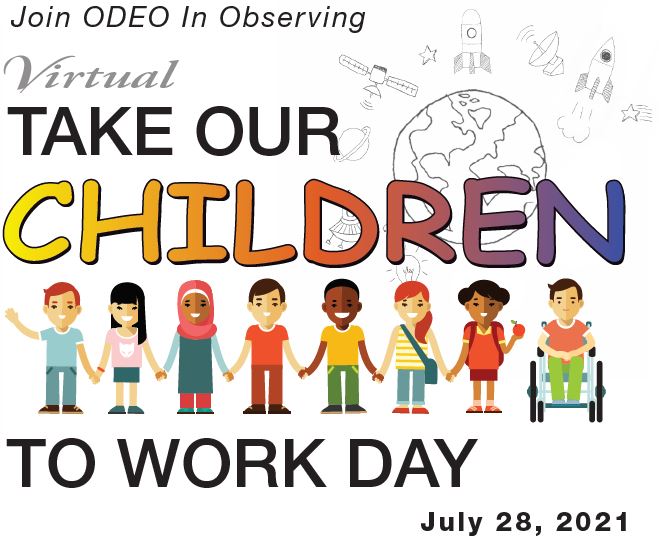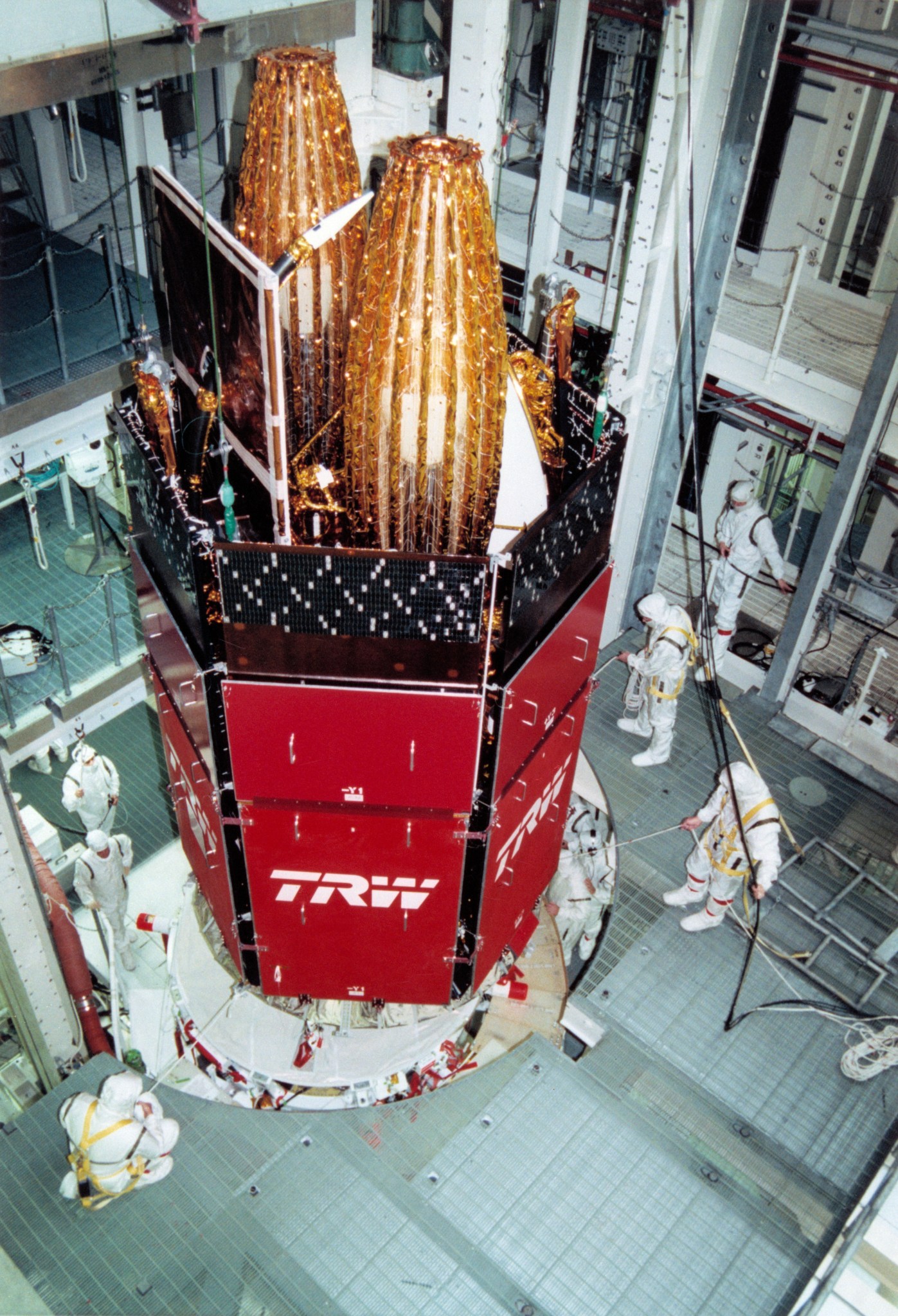NASA Solar Sail Asteroid Mission Readies for Launch on Artemis I
By Taylor Goodwin
NASA’s Near-Earth Asteroid Scout is tucked away safely inside the agency’s powerful Space Launch System rocket at NASA’s Kennedy Space Center. The solar-sailing CubeSat is one of several secondary payloads hitching a ride on Artemis I, the first integrated flight of SLS and NASA’s Orion spacecraft.
NEA Scout, a small spacecraft roughly the size of a large shoebox, has been packaged into a dispenser and attached to the adapter ring that connects SLS and Orion. The Artemis I mission will be an uncrewed flight test. It also offers deep space transportation for several CubeSats, enabling opportunities for small spacecraft like NEA Scout to reach the Moon and beyond as part of the Artemis program.
“NEA Scout will be America’s first interplanetary mission using solar sail propulsion,” said Les Johnson, principal technology investigator for the mission at NASA’s Marshall Space Flight Center. “There have been several sail tests in Earth orbit, and we are now ready to show we can use this new type of spacecraft propulsion to go new places and perform important science.”
The CubeSat will use stainless steel alloy booms to deploy an aluminum-coated plastic film sail – thinner than a human hair and about the size of a racquetball court. The large-area sail will generate thrust by reflecting sunlight. Energetic particles of sunlight, called photons, bounce off the solar sail to give it a gentle, yet constant push. Over time, this constant thrust can accelerate the spacecraft to very high speeds, allowing it to navigate through space and catch up to its target asteroid.
“This type of propulsion is especially useful for small, lightweight spacecraft that cannot carry large amounts of conventional rocket propellant,” Johnson said.
NEA Scout is also a stepping-stone to another recently selected NASA solar sail mission, Solar Cruiser, which will use a sail 16 times larger when it flies in 2025.
Sailing on sunlight, NEA Scout will begin an approximate two-year journey to fly by a near-Earth asteroid. Once it reaches its destination, the spacecraft will use a science-grade camera to capture images of the asteroid – down to about four inches per pixel – which scientists will then study to further understanding of these small but important solar system neighbors. High-resolution imaging is made possible thanks to the low-velocity flyby – less than 100 feet per second – enabled by the solar sail.
The data obtained will help scientists understand a smaller class of asteroids – those measuring less than 328 feet across – that have never been explored by spacecraft.
“The images gathered by NEA Scout will provide critical information on the asteroid’s physical properties, such as orbit, shape, volume, rotation, the dust and debris field surrounding it, plus its surface properties,” said Julie Castillo-Rogez, the mission’s principal science investigator at NASA’s Jet Propulsion Laboratory.
Near-Earth asteroids are also important destinations for exploration, in situ resource utilization, and scientific research. In the past decade, detections of near-Earth asteroids have steadily risen and are expected to grow, offering expanded opportunities as exploration destinations.
“Despite their size, some of these small asteroids could pose a threat to Earth,” said Dr. Jim Stott, NEA Scout technology project manager. “Understanding their properties could help us develop strategies for reducing the potential damage caused in the event of an impact.”
Scientists will use this data to determine what is required to reduce risk, increase effectiveness, and improve the design and operations of robotic and human space exploration, Castillo-Rogez added.
NEA Scout is developed under NASA’s Advanced Exploration Systems division. The CubeSat is designed and developed by Marshall and JPL.
Goodwin, a Media Fusion employee, supports the Office of Strategic Analysis & Communications.
NASA Conducts 5th Test in RS-25 Series Supporting Artemis Moon Missions
NASA conducted a fifth RS-25 single-engine hot fire July 14 as a continuation of its ongoing seven-part test series, supporting development and production of engines for the agency’s Space Launch System rocket on future missions to the Moon.
Operators fired the engine for more than eight minutes – 500 seconds – on the A-1 Test Stand at Stennis Space Center, providing data to Aerojet Rocketdyne, lead contractor for the SLS engines, as it produces engines for use after the first four SLS flights. The team fired the engine at 111% of its original power level for a set time, the same level that RS-25 engines are required to operate during launch, as well as at 113%, which allowed operators to test a margin of safety.
Four RS-25 engines, along with a pair of solid rocket boosters, will help power SLS, firing simultaneously to generate a combined 1.6 million pounds of thrust at launch and 2 million pounds during ascent. With testing of RS-25 engines for the first four Artemis program missions to the Moon completed, operators are now focused on collecting data to demonstrate and verify various engine capabilities, evaluate new engine components manufactured with cutting-edge and cost-saving technologies, and reduce operational risk.
NASA is building SLS as the world’s most powerful rocket to send the agency’s Orion spacecraft to the Moon as part of Artemis, including missions that will land the first woman and the first person of color on the lunar surface. The agency is working toward launch of the Artemis I uncrewed flight test this year, which will pave the way for future flights with astronauts to explore the lunar surface and prepare for missions to Mars.
SLS and Orion, along with the commercial human landing system and the Gateway outpost in orbit around the Moon, are NASA’s backbone for deep space exploration. RS-25 tests at Stennis are conducted by a combined team of NASA, Aerojet Rocketdyne, and Syncom Space Services operators. Syncom Space Services is the prime contractor for Stennis facilities and operations.
Starliner, Atlas V Assembled at Launch Site for Next Commercial Crew Flight Test
Boeing’s CST-100 Starliner spacecraft is fully assembled on its ride to space, the United Launch Alliance Atlas V rocket, in preparation for the July 30 launch of its second Orbital Flight Test in collaboration with NASA’s Commercial Crew Program. Launch is scheduled for 1:53 p.m. CDT.
The joining of Atlas V and Starliner is a major milestone ahead of the second uncrewed flight test to demonstrate the system’s human transportation capabilities to the International Space Station. The test is the last flight before the Starliner system launches American astronauts on the Crew Flight Test to the microgravity laboratory – the first flight test with crew on board.
On July 17, the capsule traveled from Boeing’s Commercial Crew and Cargo Processing Facility at NASA’s Kennedy Space Center to ULA’s Vertical Integration Facility at Cape Canaveral Space Force Station in Florida for hoisting on top of the Atlas V.
ULA’s motorized payload transporter, adapted to carry Starliner, moved at a top speed of 5 mph, heading from the processing facility, a former space shuttle hangar, eastward to the beach and then southward to Space Launch Complex-41. During the transport, Starliner was provided environmental controls also on the transporter deck.
Approaching the Vertical Integration Facility, the transporter maneuvered up to the 30-story-tall building’s doorway and parked. A four-point lifting sling, called the Handling Fixture Hoist Tool, was connected to the Starliner for the overhead crane to carefully raise the capsule onto the Atlas V waiting inside the facility aboard its mobile launch platform.
Starliner was positioned for mating to the launch vehicle adapter that serves as the spacecraft’s cradle on the rocket during ascent. The adapter also features the aeroskirt structure that smooths the air over the combined payload and Atlas V for aerodynamic stability.
Accommodations for Starliner in the Vertical Integration Facility include a clean enclosure to enter the capsule’s crew module through the hatchway, access stands for technicians to detach the lift sling and complete preflight work to the spacecraft’s exterior, as well as power and data transmission umbilicals and purge and cooling lines.
Next up is the integrated systems test, a tip-to-tail electrical check of the 172-foot-tall Atlas V and Starliner stack.
The second Orbital Flight Test – or OFT-2 – will launch Starliner on a mission to rendezvous and dock to the space station and then return about five to 10 days later to land in the western United States. The mission is an end-to-end test flight to prove the system is ready to fly astronauts.
The Launch Vehicle Propulsion Systems team, led by Catherine Sanders at NASA’s Marshall Space Flight Center, provides engineering insight for human spaceflight certification of the Atlas V.
More details about NASA’s Commercial Crew Program can be found by following the commercial crew blog, @commercial_crew on Twitter, and commercial crew on Facebook.
NASA Announces Nuclear Thermal Propulsion Reactor Concept Awards
NASA is leading an effort, working with the Department of Energy, to advance space nuclear technologies. The government team has selected three reactor design concept proposals for a nuclear thermal propulsion system. The reactor is a critical component of a nuclear thermal engine, which would utilize high-assay low-enriched uranium fuel.
The contracts, to be awarded through the Department of Energy’s Idaho National Laboratory, are each valued at approximately $5 million. They fund the development of various design strategies for the specified performance requirements that could aid in deep space exploration.
Nuclear propulsion provides greater propellant efficiency as compared with chemical rockets. It’s a potential technology for crew and cargo missions to Mars and science missions to the outer solar system, enabling faster and more robust missions in many cases.
“By working together, across government and with industry, the United States is advancing space nuclear propulsion,” said Jim Reuter, associate administrator for NASA’s Space Technology Mission Directorate. “These design contracts are an important step toward tangible reactor hardware that could one day propel new missions and exciting discoveries.”
Battelle Energy Alliance, the managing and operating contractor for Idaho National Laboratory, led the request for proposals, evaluation, and procurement sponsored by NASA using fiscal year 2021 appropriations. The laboratory will award 12-month contracts to the following companies to each produce a conceptual reactor design that could support future mission needs:
- BWX Technologies Inc. of Lynchburg, Virginia – The company will partner with Lockheed Martin.
- General Atomics Electromagnetic Systems of San Diego – The company will partner with X-energy LLC and Aerojet Rocketdyne.
- Ultra Safe Nuclear Technologies of Seattle – The company will partner with Ultra Safe Nuclear Corporation, Blue Origin, General Electric Hitachi Nuclear Energy, General Electric Research, Framatome, and Materion.
“INL is excited to enable the development of nuclear propulsion technology for potential use by NASA in future space exploration,” said Dr. Stephen Johnson, national technical director for space nuclear power and director of the Space Nuclear Power and Isotope Technologies Division at Idaho National Laboratory. “Our national laboratories, working in partnership with industry, bring unparalleled expertise and capabilities to assist NASA in solving highly complex challenges that come with nuclear power and propulsion.”
At the end of the contracts’ performance periods, the laboratory will conduct design reviews of the reactor concepts and provide recommendations to NASA. NASA will utilize the information to establish the basis for future technology design and development efforts.
NASA is also maturing a fission surface power system for use on the Moon and Mars. NASA intends to partner with the Department Of Energy and Idaho National Laboratory to release a request for proposals that asks industry for preliminary designs of a 10-kilowatt class system that NASA could demonstrate on the lunar surface. Maturing fission surface power can also help inform nuclear electric propulsion systems, another candidate propulsion technology for distant destinations.
NASA’s space nuclear technologies portfolio is led and funded by its Space Technology Mission Directorate. The agency’s Technology Demonstration Missions program manages the projects to mature affordable, reliable technologies and demonstrate system capabilities to meet power and propulsion needs for future deep space exploration. The program is based at NASA’s Marshall Space Flight Center.
For more information about NASA’s investments in space technology, visit here.
Marshall Team Bridges Gaps in Diversity, Equity, Inclusion
By Taylor Goodwin
Senior-level leaders of NASA’s Marshall Space Flight Center are linking up with the center’s offices of Human Resources and Diversity and Equal Opportunity to uphold diversity, equity, inclusion, and unity to foster and promote a well-rounded and inclusive workforce. Together, these leaders comprise the Blueprint to Reinforce Inclusivity and Diversity to Gain Equity – or BRIDGE – Champions.
Led by Marshall Deputy Director Rick Burt, the BRIDGE Champions act as a network to create strategies and goals centered around information on equal opportunity challenges, strategies, and actions that help promote a diverse and inclusive supportive working environment for the entire Marshall team. Representing each center organization, the Champions include Susan Whitfield, Loucious Hires, Patrick Rasco, Mark Richards, Roger Baird, Ginger Flores, Jose Matienzo, LaTonya Powell, Kristen Pollard Kiel, Lisa Watson-Morgan, Todd Pospisil, Jeneene Suttle, Denise Smithers, Lonnie Dutriex, Rae Ann Meyer, and Van Strickland. Representatives of Marshall’s Special Emphasis Program and Early Career Organization also contribute to these efforts.
“Everything we do is to help foster NASA’s vision to benefit the quality of life for all on Earth,” Burt said. “Part of that effort is ensuring the Marshall team is able to thrive in the working environment at the center.”
Each member shares a vision to enhance the value of diversity, inclusion, and equity at Marshall. To see this through, one of their main goals is to ensure that the center provides an inclusive and psychologically safe environment for everyone.
“The Champions work to communicate challenges, issues, and concerns of their respective constituents on matters affecting employment, career development, awards, and more,” said Hires, director of Marshall’s ODEO. “Presenting this insight to leadership, HR, and ODEO allows us to bring varying perspectives to a problem and collaborate on the best possible solutions.”
This dedication to problem-solving is matched with a commitment to proactively prevent discrimination in the workplace. The team is actively working to identify and remove any challenges in recruitment, hiring, awards, promotions, cultural competences, and career advancement for any underrepresented populations. Additionally, the Champions identify the efforts that are having a positive impact across Marshall and find ways to maximize these opportunities.
“Instead of retroactively checking the data to see if we have enough minorities on our team, we want to proactively consider the risks of not hiring minorities,” Hires said. “How hurtful would it be to Marshall’s mission to exclude the varying perspectives and talents of underrepresented candidates? Without them, we’ll never reach our full potential.”
Hires explained that the goal is to ensure that everyone has a voice and feels included at Marshall. The team frequently asks, “What are the experiences for individuals who are the minority within your organization? What about the experience of those who identify as the majority within the organization?” They examine data from demographics, survey scores, and interviews to get a holistic pulse on the center and then create strategies to address any perceived challenges.
The BRIDGE Champion efforts span HR, ODEO and management. HR owns the personnel management systems, such as succession planning, career development, recruitment, retention, mentoring, performance appraisals, and job postings. ODEO is charged with ensuring proactive prevention practices are in place. Management serves as a liaison between the directorate leadership, ODEO, and HR to enhance inclusion, equity awareness, and integration ensuring that all groups are appropriately represented throughout each organization. With all these key players in place, the BRIDGE Champions initiative seeks to enhance the experience of all Marshall team members.
“The strength of our BRIDGE Champions program was shown as we faced the COVID-19 pandemic and the civil unrest of 2020 and 2021,” said Carolyn Magsby, ODEO deputy director. “As we all adapted to telework, the Champions listened to the issues and concerns of their organizations and communicated them directly to center leadership, Diversity and Equal Opportunity, and Human Resources. That helped us identify issues that we may not have seen on our own. After addressing those problems, we could ensure that each team member had exactly what they needed to do their job.”
The open channels of communication BRIDGE built enabled Marshall to hold conversations about the uncertainty the workforce felt during a difficult time and environment.
As the Marshall team moves forward, the BRIDGE Champions are gearing up to continue inspiring, engaging, and educating the workforce as they execute the center’s mission.
“I challenge the entire team to fully support NASA’s diversity and inclusion policy, programs, and culture so all organizations and individuals feel empowered to work together in a unified way to best achieve our mission,” Burt said.
Goodwin, a Media Fusion employee, supports the Office of Strategic Analysis & Communications.
Redstone Arsenal Rolls Out New Gate Access Requirements
By Rick Smith
As NASA’s Marshall Space Flight Center continues to ease COVID-19 restrictions and more team members return to on-site work, drivers are reminded that Redstone Arsenal is responsible for security across Marshall and the installation. For that reason, the arsenal has increased random vehicle inspections this summer and has overhauled its requirements for arsenal entry by NASA workers, retirees, and their guests.
Beginning Aug. 1, Marshall drivers entering Redstone Arsenal will no longer present their Marshall identification badges – which will continue to be used to gain entry to authorized Marshall facilities and to access their government-issued computers.
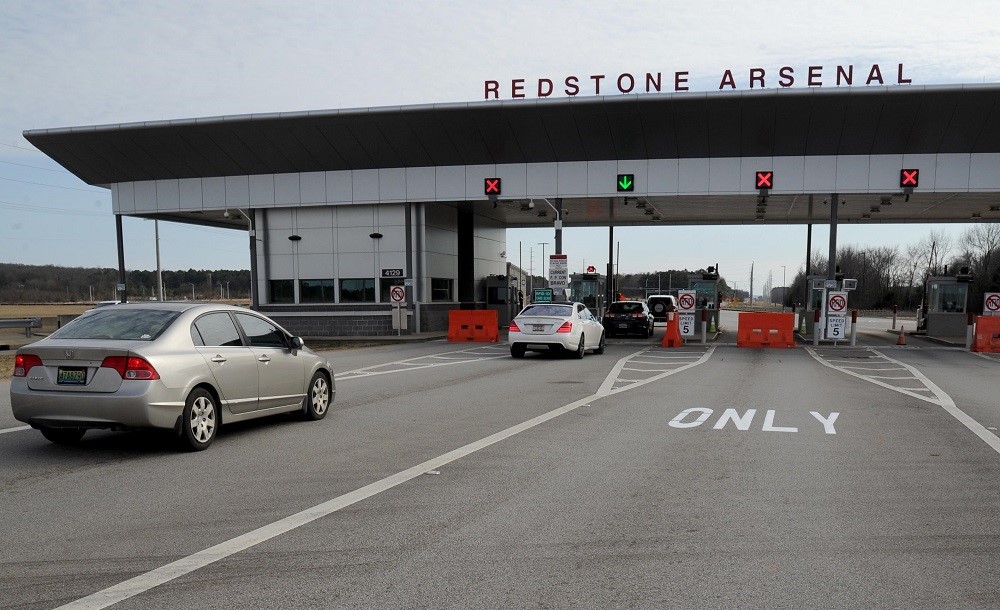
Instead, all drivers are expected to show their state-issued driver’s license to the security guards – or have it ready as a backup when using the facial recognition lanes, in case that system is unable to make a positive recognition.
“When presenting your license to the guards, show them the back of the license, which they need to scan to verify that your information appears in the Redstone AIE database,” said Bill Marks, deputy director of Marshall’s Office of Center Operations.
It’s also a good idea to have vehicle registration and proof of insurance ready when you arrive, Marks added. They may be requested as part of the arsenal’s random security inspections.
Three facial recognition pilot program lanes are now open, including lanes 3 and 4 at Gate 9 and lane 3 at Gate 1. Only single-occupant vehicles may use these lanes, and drivers are asked to remove sunglasses, hats, or other paraphernalia that could prevent a clear scan and cause delays.
Thanks to an agreement between the U.S. Army Garrison at Redstone and the state’s Department of Motor Vehicles, the majority of Marshall team members who are licensed Alabama drivers and who started work before Sept. 16, 2020, have already had their driver data ported to secure Army databases supporting Redstone’s AIE system.
The new system more reliably compares driver data with Alabama law enforcement records, Marks said, and will be updated more frequently via regular automated updates to the database.
Marshall Personal Identity Verification badges and Agency Smart Badges – those with the embedded gold chip – will continue to be accepted at entry gates through July 30.
Some special circumstances are worth detailing:
- New employees: Any Marshall team member who started work on or after Sept. 16, 2020, who does not have a current Alabama driver’s license, or has opted out of the DMV data transfer, must go to the visitor center no later than July 30.
- Retirees: Every NASA government retiree who visits Redstone or Marshall must register his or her driver’s license at the visitor center.
- Employee family members or guests: NASA policy requires all employee family members and guests to be registered in the Visitor Management System for access to MSFC buildings and areas. Visitors who are U.S. citizens shall provide one form of government-issued photo ID – a driver’s license, passport, or state photo ID – and must be sponsored by a NASA employee with a permanent PIV badge. Contractor employees may not escort visitors on-site. NASA visitor badges may be issued for a period of less than 30 days per single visit and no more than a cumulative total of 29 days in a 365-day period. Contact your organization’s designated VMS requester to have family members or guests entered into the VMS at least two business days prior to their arrival.
- Underage dependents: Children aged 15 and below who are U.S. citizens are not required to be entered into the VMS or to be badged. Dependents must be escorted at all times by an individual holding a valid NASA PIV badge or equivalent federal agency PIV card that has been previously registered in IdMAX.
- Civil servants seeking to invite a guest on-site can log the request into the Visitor Management System at least 24 hours prior to the visit. Contractors cannot sponsor guests on-site via the VMS system.
- Disabled non-drivers: For disabled or physically impaired team members, Marshall will authorize a spouse or family member a Carpool Associate Badge. Contact the badging office at msfc-badgingoffice@mail.nasa.gov to request a Carpool badge.
- Vehicle passengers: When badged coworkers carpool, a civil servant driver whose identification is already logged into the system may vouch for the passengers. If the driver is a contractor, everyone in the car must show their driver’s license. In either case, multi-occupant vehicles are advised to avoid the facial recognition lanes, which are set up only to scan single drivers.
To have your photo and driver’s license entered into the Redstone system, stop by the Visitor Control Center at Gate 9 between 6 a.m. and 6 p.m. Monday through Friday. The visitor center is closed on federal holidays. Failure to register could result in delays or denial of access to Redstone.
Recreational badges available
Non-employees still may drive onto Redstone to meet a spouse or other family members for lunch or for limited access to key community and recreational facilities, including Redstone Lanes Bowling Center, Golf/Frisbee Golf Course, Redstone Arsenal Conference Centers, ACS Welcome Center/Java Café, Garrison Headquarters, police headquarters, sports fields and cycling and recreation areas. They’ll simply need a Recreational Badge to do so.
According to Ron Thomas, director of operations for Redstone’s Installation Management Command, individuals can obtain these badges at the visitor center during normal business hours. They will need to fill out paperwork, including home address, social security number, and vehicle tag number. They’ll also undergo a background check to identify any criminal arrests or felony convictions within the past 10 years. Once cleared, they’ll receive a Recreational Badge good for the approved duration of their visit.
The whole process, Thomas said, can be completed in about 15 minutes. A parent or guardian must accompany anyone under the age of 18 and sign a release permitting a background check on the applicant.
Marks also encouraged those Marshall team members who may be returning to on-site work for the first time in months to thoroughly check their vehicles beforehand and remove firearms and other weapons or any other prohibited materials. If discovered during random Redstone vehicle inspections, such items could result in the driver being denied access to the arsenal.
Regular Marshall-issued civil service and contractor badges still will be required for authorized building entry and to activate government computers. Do not turn in your center-specific or temporary badge. For more information about gate guidelines, visit Inside Marshall or contact Hollie Smith at hollie.hemphill.smith@nasa.gov.
Smith, a Manufacturing Technical Solutions employee, supports Marshall’s Office of Strategic Analysis & Communications.
Challenges of Past Year Amplify Need for Feds Feed Families as Campaign Kicks Off
By Janet Sudnik
Feds Feed Families, the federal government’s annual summer drive to collect food and donations for those in need, is underway now through the end of August. The agency hopes to collect nonperishable food items via online giving as well as in-kind contributions – services, volunteer hours – that total 160,000 pounds to food banks and pantries.
Coordinating this year’s effort on behalf of NASA’s Marshall Space Flight Center is Selina Salgado, a Human Resources business partner who joined the Marshall team in January 2021, after completing a Pathways Program internship in December 2020.
“I have always had a passion for helping others through food, whether it’s volunteering at a food bank, passing out food from a church pantry, or serving dinners at shelters,” Salgado said. “So when the opportunity came up to get involved with Feds Feed Families as Marshall’s coordinator, I was excited to participate. I come from a low-income household and benefited from the graciousness of my neighbors as a child. Now, I enjoy giving back whenever I am able, and this campaign is an extension of that.”
This year, with social distancing measures still in place in Huntsville and across the country in response to the COVID-19 pandemic, team members are encouraged to donate online.
“This past year was incredibly difficult for many of us,” Salgado said. “There are people in our community who, on top of the threat of COVID-19, were unsure where their next meal was going to come from. Food insecurity is a problem that affects so many people, particularly in the summer months when students don’t have access to free school lunches. The donations brought in through Feds feed Families can provide relief to those in our communities who are need.”
Since the campaign began in 2009, federal workers and their contractor partners have collected more than 99 million pounds of nonperishable food items to support families at risk of hunger. In 2020 alone, more than 7.2 million pounds were donated to food banks and pantries across the country.
Team members can visit the online Feds Feed Families Hub to learn more about the campaign and to record their donations.
Sudnik is a public affairs officer in Marshall’s Office of Strategic Analysis & Communications.
Marshall to Host Virtual Take Our Children to Work Day
By Taylor Goodwin
Since adapting to a telework environment where careers and home life collide, Take Our Children to Work Day can feel more like a daily routine than an annual event. This year, the Office of Diversity and Equal Opportunity at NASA’s Marshall Space Flight Center is stepping in to help parents, grandparents, and other family members give their kids a closer look at the agency’s mission.
The theme of this year’s virtual event, which will be July 28 via Microsoft Teams, is “Boldly Moving Forward.” Kicking off at 10 a.m., the day is packed with exciting activities including a special guest inventor, scientist, and Time magazine’s 2020 Kid of the Year – Gitanjali Rao.
“One of the objectives of Take Our Children to Work Day is to create a diverse pipeline of qualified candidates for science, technology, engineering, and math-related fields,” said Amanda Otieno, equal employment specialist in Marshall’s Office of Diversity and Equal Opportunity. “Our hope is that with this year’s virtual event, we can show how fun and engaging learning is, and inspire the next generation to pursue a career in STEM.”
Rao will share how she became an inventor at such a young age and answer questions from NASA kids. Rao was recognized as America’s top young scientist and received an Environmental Protection Agency Presidential award for the invention of an early lead-detection tool. She is also the inventor of a device for early diagnosis of prescription opioid addiction that uses genetic engineering, and an anti-bullying service using artificial intelligence and natural language processing.
Other activities include:
- 10:45 a.m. – Howard Soohoo of Marshall’s Chief Engineer’s Office will host a liquid nitrogen demonstration where kids can see materials freeze instantaneously.
- 11:15 a.m. – Children are invited to participate in a live craft activity led by Marshall budget analyst Francee Logston and NASA interns. Participants will have the opportunity to create a galaxy glitter jar and a robot. Required materials are listed here.
- Noon – Mario Maitland, owner of Maitland Conservatory music school in Huntsville, will teach a digital music production session where kids will learn to create music digitally for radio, movies, and television using cloud-based music production software.
- 1 p.m. – Jessica Taylor, a physical scientist at NASA’s Langley Research Center, will teach children how to estimate cloud coverage using simple household materials.
- 1:45 p.m. – Marshall budget analyst Beverly Johnson will lead a kid-friendly workout session.
For more information, visit the event page on Inside Marshall or contact program manager Otieno at Amanda.otieno@nasa.gov.
Goodwin, a Media Fusion employee, supports the Office of Strategic Analysis & Communications.
Lucy Time Capsule Highlighted on ‘This Week @NASA’
The plan for NASA’s Lucy spacecraft to carry a time capsule is featured in “This Week @NASA,” a weekly video program broadcast on NASA-TV and posted online.
When Lucy launches on a first-of-its-kind-mission to visit the Trojan asteroids, which share an orbit with Jupiter, it will carry a plaque with messages of advice, wisdom, joy, and inspiration for those who might encounter the spacecraft in the distant future. The messages were solicited from thoughtful leaders and inspirational figures, including members of the Beatles, whose song, “Lucy in the Sky with Diamonds,” indirectly inspired the mission’s name.
After Lucy finishes visiting a record number of asteroids for a single mission in 2033, it will continue on a stable orbit – travelling between Earth and the Trojan asteroids for hundreds of thousands, if not millions, of years.
Lucy is a project of the Science Mission Directorate’s Discovery Program, managed by NASA’s Marshall Space Flight Center.
View this and previous episodes at “This Week @NASA” on NASA’s YouTube page.
This Week in NASA History: STS-70 Lands – July 22, 1995
This week in 1995, space shuttle Discovery, mission STS-70, landed at NASA’s Kennedy Space Center following a successful eight-day mission. STS-70’s key objective was to deploy a Tracking and Data Relay Satellite – TDRS-G – while the remainder of the mission was spent performing a variety of experiments. Here, members of the Kennedy’s Payload Processing Team hoist TDRS-G into a work stand in the Vertical Processing Facility for mating with its Inertial Upper Stage, After testing and final checkout, TDRS-G and the stage were transported to Launch Pad 39B and installed into the Discovery’s payload bay. The NASA History Program is responsible for generating, disseminating, and preserving NASA’s remarkable history and providing a comprehensive understanding of the institutional, cultural, social, political, economic, technological, and scientific aspects of NASA’s activities in aeronautics and space. For more pictures like this one and to connect to NASA’s history, visit the Marshall History Program’s webpage. (NASA)





























